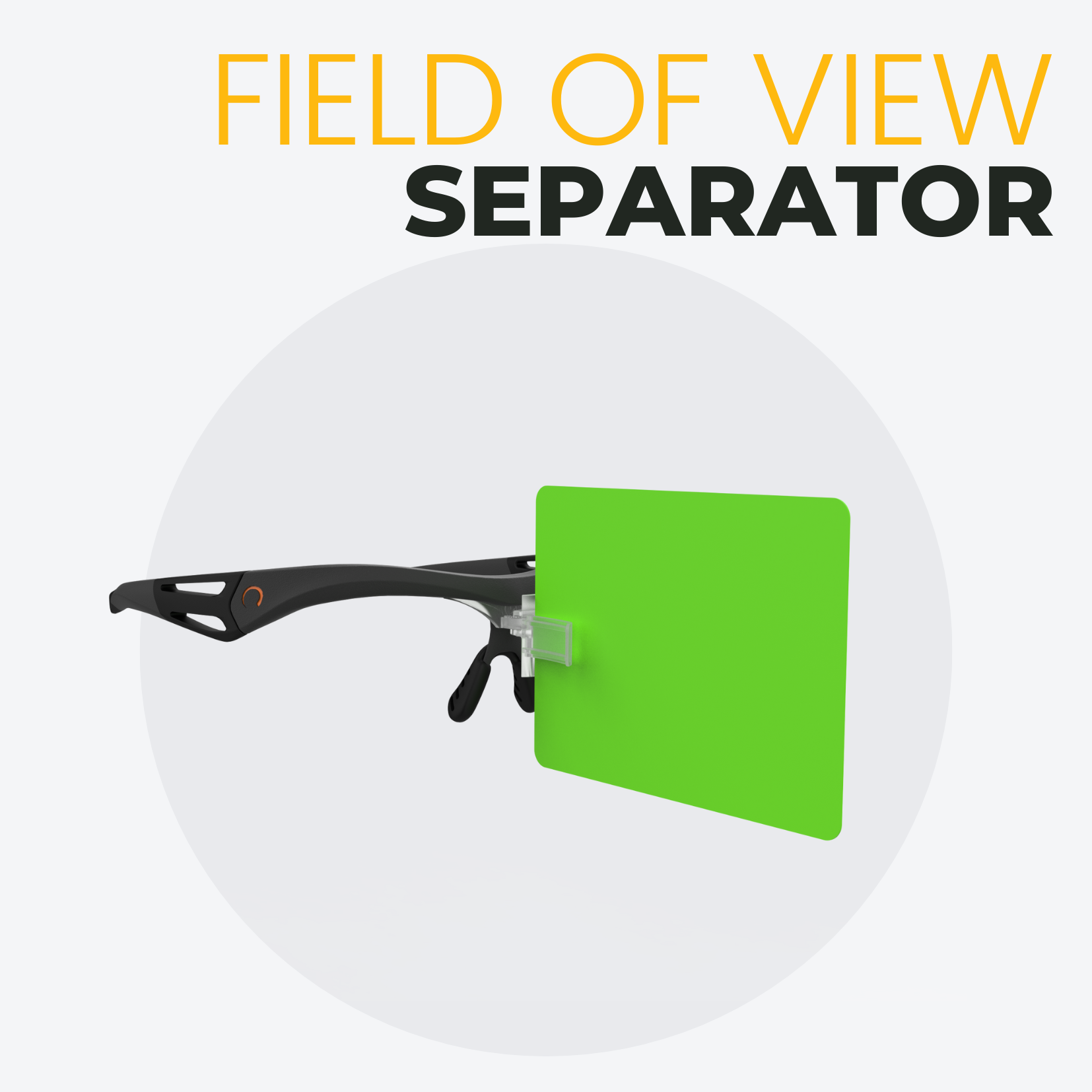Overbound Field of View Separator is a dual vision obstruction tool that splits the field of view into two halves, and thus eliminates binocular vision. It allows the right eye to see the right side of the visual field and the left eye to see the left side. The right part of the vision field that is usually seen with the left eye and vice versa for the right eye is no longer there. So, in order to see the whole image in front of you, both eyes must participate equally. If not, then portions of the image will be missing, will be blurry or otherwise distorted.
WHEN TO SEPARATE YOUR VISION FIELD
When the fields of view of the eyes are separated, the competition between the two eyes subsides and the only way one can see the image that is in front of them is by the two eyes getting engaged in the process of seeing.
The most common situations when such an approach is helpful are:
UNEQUAL ACUITY in the left and the right eye (one uses stronger diopters / stronger glasses than the other)
LAZY / SUPPRESSED EYE (an eye that is completely or mostly disengaged from the process)
INSUFFICIENT EYE COORDINATION
WEAK BINOCULAR / 3D VISION
WHAT IS IN THE BOX
ADJUSTABLE CLIP
Moves left to right to provide the opportunity to adjust the position of the card relative to the eyes.
Clicks right into the Overbound Eyesight Trainer frame* and can be stored inside the case.
*frame is not included
3 DOUBLE SIDED CARDS
Do your eyes prefer some colors to others?
These double sided cards offer a total of 6 colors, so that your learning can be as easy as possible.
HOW DOES THE TOOL WORK AND WHAT IT HELPS WITH?
The nose card gives you immediate feedback about what each eye sees and does not see, as its vision cannot be compensated for by the other eye.
When being used for eye activation, it provides a very gentle approach to the task. Unlike a mono shield (or worse an eye patch), the nose card does not eliminate the presence of either eye. Instead it gives the more challenged eye a chance to slowly take ownership of its part of the seeing responsibility.
When being used for the development of acuity, it provides constant information to the brain about what one eye sees and what the other eye sees and therefore imagination can be leveraged at a high level and in an easy manner.
Balanced acuity (same acuity in both eyes) is important for good recognition of depth. The nose card helps with the development of such balance, which can then be built upon with other techniques that bring 3D vision to life.
And finally, it is suitable for passive practice! Yes, we all love doing nothing, so here you go. Take the card for a walk, relax and just let your vision do what it wants to do.
As a bonus benefit, the nose Card provides an immediate feedback regarding your head posture, specifically about the head tilt to a side. That is important to those dealing with astigmatism.
PRACTICING WITH THE NOSE CARD
Any good vision improvement program includes the techniques for eye activation, eye engagement and acuity development. The development of such skills is often practiced with the use of the nose card / field of view separator. At Overbound you will learn such techniques inside any full scope program. If you are new to vision improvement, check out Clarity Unleashed.
The most common natural vision techniques that leverages the Nose Card are:
Noticing the Presence of Two Cards
Seeing the Corridor
The NOSE CARD vs. the BUTTERFLY SHIELD
Both of these tools separate the student’s field of view, but their roles differ.
The Nose Card’s primary purpose is to initiate gentle and progressive eye activation while the Butterfly supports eye partnership and binocularity. The impact of the two tools overlaps in the area of eye engagement. While the nose card provides more flexibility, the Butterfly is certainly easier to wear for longer time periods and to use while engaging in movement.





